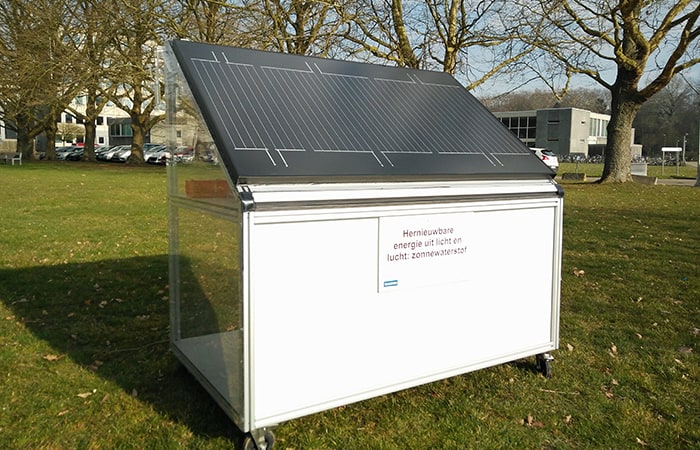Viewpoint
 Joanna Thurston explains how an invention from Belgium could help advance the hydrogen economy
Joanna Thurston explains how an invention from Belgium could help advance the hydrogen economy
Bioscience experts in Belgium have developed a new solar panel capable of producing hydrogen from moisture in the air. The technology, which is subject to field trials, has caused considerable excitement as the research scientists claim to have discovered a means of producing significant quantities of hydrogen gas – up to 250 litres per day - from a renewable energy source.
While technologies capable of producing hydrogen from electricity generated from a renewable energy source already exist, this invention is a significant step forward and offers considerable potential in terms of its application. Measuring 1.6m2, the compact size of the innovative solar panel, combined with its operational efficiency, make it suitable for localised, on-site generation.

The inventors, from Katholieke Universiteit Leuven in Belgium, explained that the technology has taken 10 years to develop to this point. Initially, it was found that while traditional solar panels have an average energy yield of 18-20%, a significant amount of this energy was needed to split the water molecules to produce hydrogen gas. When this was first attempted the yield was just 0.1% and the scientists claim that subsequent refinements of the technology have increased this to 15%.
Closer examination of the published underlying IP reveals that the sustainable technology involves the use of an electrolysis system, paired with an efficient atmospheric water absorption system, to produce hydrogen from moisture in the air.
Specifically, the method requires an assembly of standard photovoltaic (PV) cells and a piece of apparatus featuring two compartments. A well-designed temperature and hydration management system is used to maintain a satisfactory level of hydration. During the day, solar cells provide the required voltage to cause the water molecules to react and split. Light transmitted through the PV cells is used to provide the energy needed to operate a heat absorber/collector, which is directly connected to a reversible water sorption material. Water is released from this material, before being diffused through an ion exchange material, thereby wetting it. During operation, water is oxidised at the anode and oxygen is released in air. Simultaneously, hydrogen is produced and collected at the cathode. During the night, cool humid air circulates through the device and the reversible water sorption material can replenish.
Whilst the technology is still relatively early stage and field trials will be needed to test its real-world performance, it could accelerate the way to the green hydrogen economy. For example, one of the main barriers to take-up of hydrogen-powered cars has been the challenges surrounding hydrogen storage and the need for expensive refuelling infrastructure to support their use. The compact design and efficiency of this invention, which can be easily transported and used onsite, could provide a solution to these problems and help to make hydrogen-powered motoring more viable. Recognising its wider potential, Toyota has also announced plans to explore use of the technology to provide a sustainable energy source for its electric cars.
There might also be potential to utilise the technology to provide green hydrogen gas to fuel national gas grids. While some businesses are already generating hydrogen for this purpose, this typically involves the construction of large facilities reliant on a national electricity grid for power, which has a greater environmental impact. If this invention proves to be scalable, it could revolutionise the roll-out of hydrogen infrastructure.
Having invested significant resources in the development of this technology over the past decade, the university is seeking patent protection for its invention, which is critical to its commercial viability. Bearing in mind that it involves the pairing of two known fields of technology, this is a noteworthy achievement in itself and it highlights the potential patentability of combining separate technologies into a unified product.
In this case, tried-and-tested PV technology is being used to produce energy which in turn can power the necessary electrolysis. This could be the breakthrough that the green hydrogen economy has been waiting for.
Dr Joanna Thurston is a partner and patent attorney at European intellectual property firm, Withers & Rogers.




Poll: Should the UK’s railways be renationalised?
I think the rail infrastructure should remain "nationalised" in the same way that the roads and motorways are "nationalised". I think the trains that...